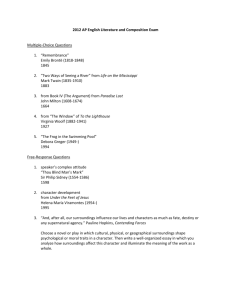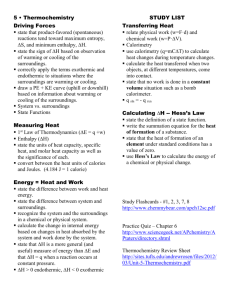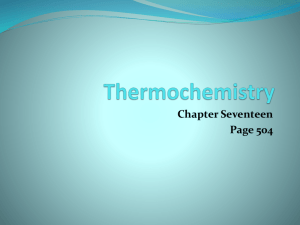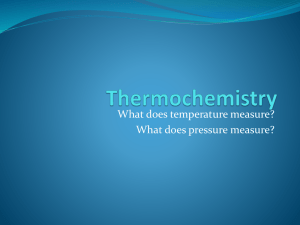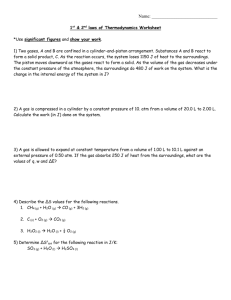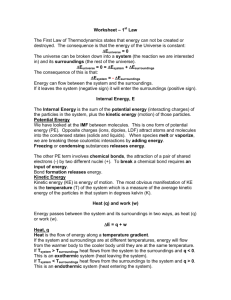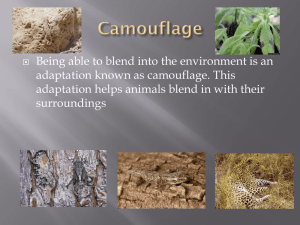7-23 energy of the block decreases, and (b) the block and... Perpetual-Motion Machines 7-59C
advertisement
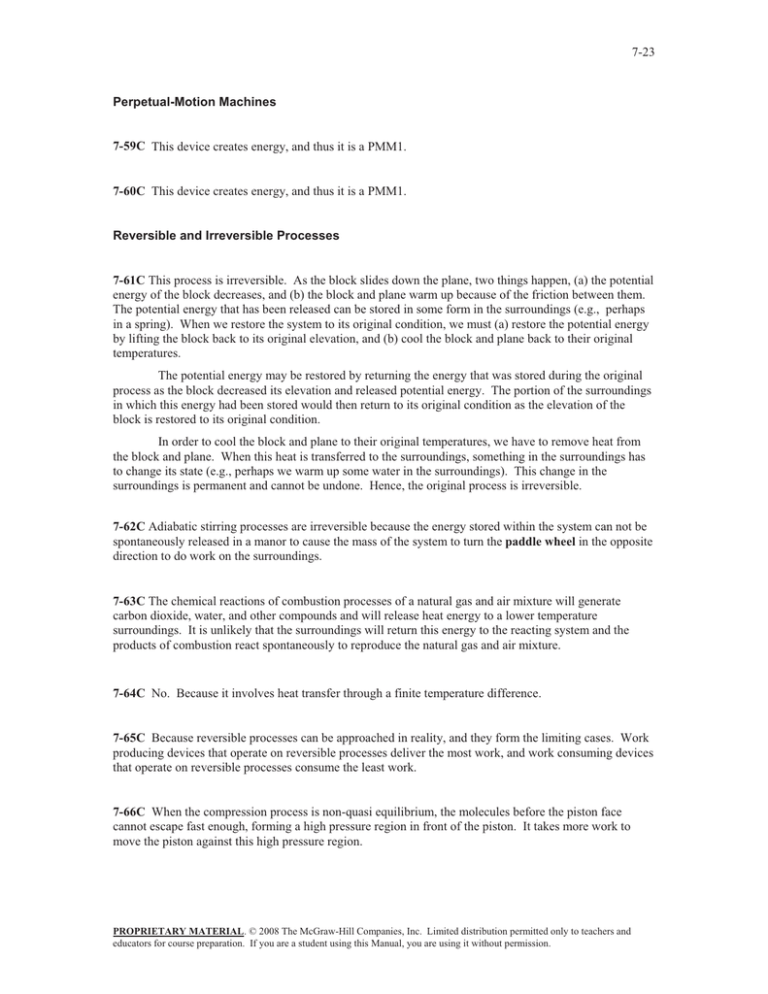
7-23 Perpetual-Motion Machines 7-59C This device creates energy, and thus it is a PMM1. 7-60C This device creates energy, and thus it is a PMM1. Reversible and Irreversible Processes 7-61C This process is irreversible. As the block slides down the plane, two things happen, (a) the potential energy of the block decreases, and (b) the block and plane warm up because of the friction between them. The potential energy that has been released can be stored in some form in the surroundings (e.g., perhaps in a spring). When we restore the system to its original condition, we must (a) restore the potential energy by lifting the block back to its original elevation, and (b) cool the block and plane back to their original temperatures. The potential energy may be restored by returning the energy that was stored during the original process as the block decreased its elevation and released potential energy. The portion of the surroundings in which this energy had been stored would then return to its original condition as the elevation of the block is restored to its original condition. In order to cool the block and plane to their original temperatures, we have to remove heat from the block and plane. When this heat is transferred to the surroundings, something in the surroundings has to change its state (e.g., perhaps we warm up some water in the surroundings). This change in the surroundings is permanent and cannot be undone. Hence, the original process is irreversible. 7-62C Adiabatic stirring processes are irreversible because the energy stored within the system can not be spontaneously released in a manor to cause the mass of the system to turn the paddle wheel in the opposite direction to do work on the surroundings. 7-63C The chemical reactions of combustion processes of a natural gas and air mixture will generate carbon dioxide, water, and other compounds and will release heat energy to a lower temperature surroundings. It is unlikely that the surroundings will return this energy to the reacting system and the products of combustion react spontaneously to reproduce the natural gas and air mixture. 7-64C No. Because it involves heat transfer through a finite temperature difference. 7-65C Because reversible processes can be approached in reality, and they form the limiting cases. Work producing devices that operate on reversible processes deliver the most work, and work consuming devices that operate on reversible processes consume the least work. 7-66C When the compression process is non-quasi equilibrium, the molecules before the piston face cannot escape fast enough, forming a high pressure region in front of the piston. It takes more work to move the piston against this high pressure region. PROPRIETARY MATERIAL. © 2008 The McGraw-Hill Companies, Inc. Limited distribution permitted only to teachers and educators for course preparation. If you are a student using this Manual, you are using it without permission.
